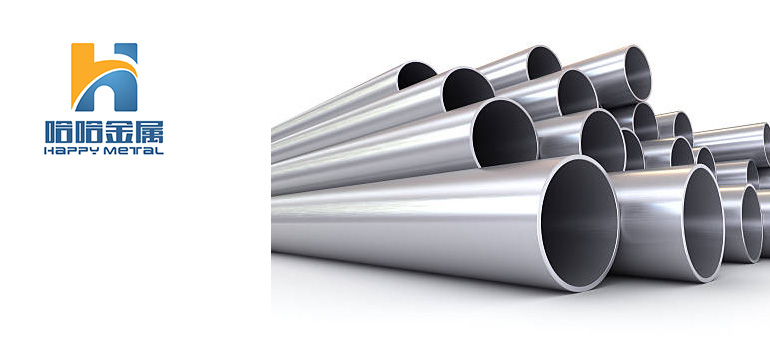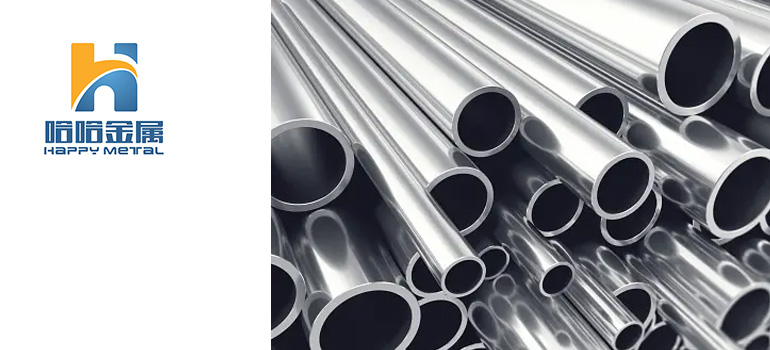Summary:
Diving Deep: Understanding Various Types of Stainless Steel Pipe and Their Properties
What is Stainless Steel Pipe?
Importance of Understanding Different Types
Common Types of Stainless Steel Pipe
Specialty Stainless Steel Pipe Varieties
What is Stainless Steel Pipe?
Stainless steel pipe is a cylindrical hollow tube made primarily from stainless steel, an alloy composed mainly of iron, chromium, nickel, and other elements. What sets stainless steel apart from traditional steel is its exceptional resistance to corrosion and staining. This resistance is due to the presence of chromium, which forms a passive oxide layer on the surface of the steel, protecting it from oxidation and corrosion.
Stainless steel pipes are widely used in various industries and applications due to their versatility, durability, and hygienic properties. They are commonly used for transporting fluids and gases in industries such as oil and gas, chemical processing, food and beverage, pharmaceuticals, and water treatment. Additionally, stainless steel pipes find applications in structural components, heat exchangers, automotive exhaust systems, and architectural features due to their aesthetic appeal and strength.
Overall, stainless steel pipes play a crucial role in modern infrastructure and manufacturing processes, offering a combination of strength, corrosion resistance, and longevity that makes them indispensable in numerous applications.
Importance of Understanding Different Types

Understanding the different types of stainless steel pipes is crucial for several reasons:
Selection of the Right Material: Each type of stainless steel pipe has its unique properties, strengths, and limitations. By understanding these differences, engineers, manufacturers, and designers can select the most suitable material for specific applications. Whether it’s for high-temperature environments, corrosive atmospheres, or hygienic conditions, choosing the right type of stainless steel pipe ensures optimal performance and longevity.
Optimizing Performance and Cost: Different types of stainless steel pipes vary in terms of their mechanical properties, corrosion resistance, and cost. By matching the material to the requirements of the application, businesses can optimize performance while minimizing expenses. For instance, selecting a more corrosion-resistant grade may initially incur higher costs but can lead to significant savings over the pipe’s lifecycle by reducing maintenance and replacement needs.
Ensuring Compatibility: In many industries, stainless steel pipes come into contact with various substances, including chemicals, acids, and fluids. Understanding the compatibility of different stainless steel grades with these substances is essential to prevent corrosion, contamination, or structural failure. By choosing compatible materials, businesses can ensure the safety, reliability, and integrity of their systems and processes.
Compliance with Regulations and Standards: Different industries often have specific regulations, standards, and codes governing the materials used in their facilities and equipment. By understanding the requirements and specifications relevant to their industry, businesses can ensure compliance and avoid costly penalties or legal issues. Additionally, adhering to industry standards promotes interoperability, quality assurance, and customer satisfaction.
Facilitating Innovation and Problem-Solving: In some cases, traditional stainless steel grades may not meet the unique demands of a particular application. By understanding the characteristics of different stainless steel alloys, engineers and researchers can innovate new materials or adapt existing ones to address specific challenges. This knowledge-driven approach enables continuous improvement, problem-solving, and innovation in various industries.
In summary, understanding the different types of stainless steel pipes empowers businesses and professionals to make informed decisions, optimize performance, ensure safety and compliance, and drive innovation. It serves as a foundation for efficient design, manufacturing, and operation across a wide range of applications and industries.
Common Types of Stainless Steel Pipe
Certainly! Here are the common types of stainless steel pipes:
Austenitic Stainless Steel Pipes: Known for their excellent corrosion resistance and formability, austenitic stainless steel pipes are the most widely used type. They contain high levels of chromium and nickel, which make them highly resistant to corrosion in a wide range of environments. Common grades include 304 (18-8 stainless steel) and 316, which are often used in food processing, pharmaceuticals, and marine applications.
Ferritic Stainless Steel Pipes: Ferritic stainless steel pipes are magnetic and contain higher levels of chromium but lower levels of nickel compared to austenitic grades. They offer good corrosion resistance in mildly corrosive environments and high strength at elevated temperatures. Ferritic stainless steel pipes are commonly used in automotive exhaust systems, heat exchangers, and decorative applications.
Duplex Stainless Steel Pipes: Duplex stainless steel pipes combine the best attributes of austenitic and ferritic grades, offering high strength, corrosion resistance, and resistance to stress corrosion cracking. They contain a balanced mixture of chromium, nickel, and molybdenum, along with a dual-phase microstructure. Duplex stainless steel pipes are used in demanding applications such as chemical processing, offshore oil and gas exploration, and desalination plants.
Martensitic Stainless Steel Pipes: Martensitic stainless steel pipes are characterized by their high strength, hardness, and wear resistance. They contain higher levels of carbon and lower levels of chromium compared to austenitic and ferritic grades, resulting in a microstructure that is primarily martensitic. Martensitic stainless steel pipes are used in applications requiring high mechanical properties, such as cutlery, surgical instruments, and industrial equipment.
Precipitation Hardening Stainless Steel Pipes: Precipitation hardening stainless steel pipes undergo a heat treatment process to achieve a combination of high strength and corrosion resistance. They contain alloying elements such as copper, aluminum, or niobium, which form precipitates during aging, strengthening the material. Precipitation hardening stainless steel pipes are used in aerospace, chemical processing, and high-performance engineering applications.
Each type of stainless steel pipe offers unique properties and advantages, making them suitable for various applications across industries. Understanding the differences between these types allows engineers, designers, and manufacturers to select the most appropriate material for specific requirements, ensuring optimal performance and longevity.
Specialty Stainless Steel Pipe Varieties
Certainly! Here are some specialty stainless steel pipe varieties:
Martensitic Stainless Steel Pipes: Martensitic stainless steel pipes are known for their high strength, hardness, and wear resistance. They are characterized by a microstructure predominantly composed of martensite, a hard crystalline structure formed through heat treatment. Martensitic stainless steel pipes find applications in industries such as cutlery manufacturing, surgical instruments, industrial equipment, and automotive components where strength and durability are paramount.
Precipitation Hardening Stainless Steel Pipes: Precipitation hardening stainless steel pipes, also known as PH stainless steel, undergo a unique heat treatment process to achieve a combination of high strength and corrosion resistance. These pipes contain alloying elements such as copper, aluminum, or niobium, which form precipitates during aging, thereby strengthening the material. Precipitation hardening stainless steel pipes are utilized in aerospace, chemical processing, nuclear power plants, and high-performance engineering applications where exceptional mechanical properties are required.
High-Alloy Stainless Steel Pipes: High-alloy stainless steel pipes are engineered to withstand extreme environments and aggressive media. They contain a high concentration of alloying elements such as chromium, nickel, molybdenum, and sometimes tungsten or cobalt. These pipes offer superior corrosion resistance, oxidation resistance, and high-temperature strength, making them suitable for applications in chemical processing, oil and gas extraction, power generation, and marine environments.
Super Duplex Stainless Steel Pipes: Super duplex stainless steel pipes exhibit enhanced corrosion resistance and mechanical properties compared to conventional duplex grades. They contain higher levels of chromium, molybdenum, and nitrogen, along with a dual-phase microstructure consisting of austenite and ferrite. Super duplex stainless steel pipes are utilized in demanding applications such as offshore oil and gas exploration, subsea pipelines, desalination plants, and chemical processing facilities where corrosion resistance and strength are critical.
Nickel Alloy Stainless Steel Pipes: Nickel alloy stainless steel pipes incorporate nickel as a primary alloying element, enhancing their resistance to corrosion, oxidation, and high-temperature environments. These pipes are used in specialized applications requiring exceptional corrosion resistance, such as chemical processing, petrochemical refining, aerospace components, and nuclear power plants.
These specialty stainless steel pipe varieties cater to specific industry requirements and challenging operating conditions, offering superior performance, longevity, and reliability in demanding applications. Understanding the unique properties and characteristics of each type enables engineers, designers, and manufacturers to select the most suitable material for their projects, ensuring optimal performance and durability.




